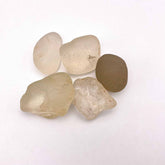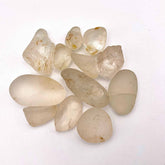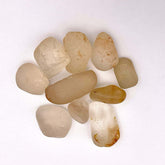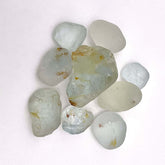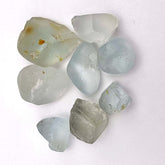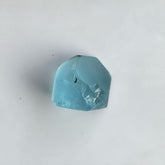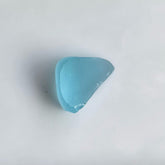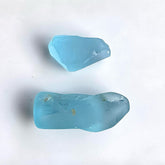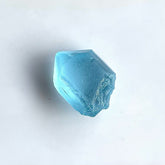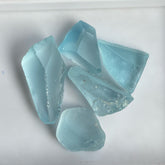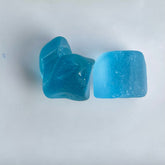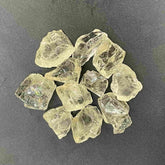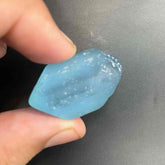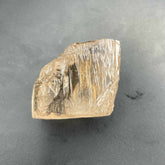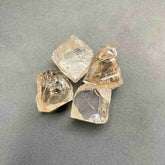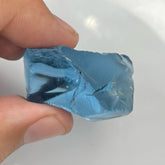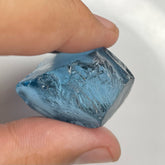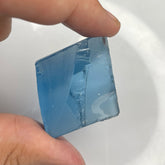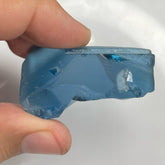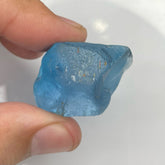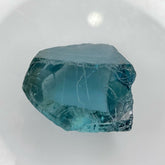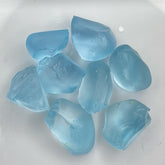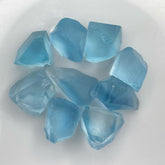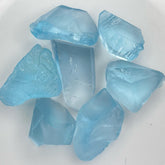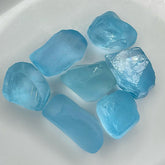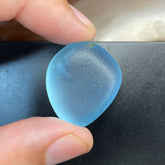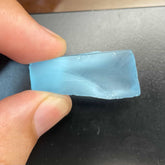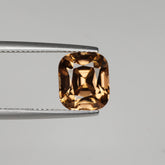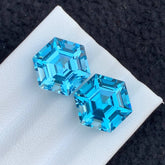Filter
79 results
30
- 10
- 15
- 20
- 25
- 30
- 50
Date, new to old
- Featured
- Best selling
- Alphabetically, A-Z
- Alphabetically, Z-A
- Price, low to high
- Price, high to low
- Date, old to new
- Date, new to old
Sort
Sort by:
- Featured
- Best selling
- Alphabetically, A-Z
- Alphabetically, Z-A
- Price, low to high
- Price, high to low
- Date, old to new
- Date, new to old
-
Facet Rough Brown Topaz Pieces
Facet Rough Brown Topaz Pieces Facet Rough Brown Topaz Pieces, available for sale, natural high-quality rough gemstones, eye clean, 197.20 carats rough topaz from Madagascar. Product Information: Gemstone Type Facet Rough Brown Topaz Pieces Weight 197.20 carats Average Weight 65.74 carats Clarity SI to...- $145.00
- $145.00
- Unit price
- / per
-
Light Brown Topaz Facet Rough Parcel
Light Brown Topaz Facet Rough Parcel Light Brown Topaz Facet Rough Parcel, available for sale, natural high-quality rough gemstones, eye clean, 306 carats rough topaz from Madagascar. Product Information: Gemstone Type Light Brown Topaz Facet Rough Parcel Weight 306 carats Average Weight 25.5 carats...- $225.00
- $225.00
- Unit price
- / per
-
Facet Rough Light Brown Topaz Parcel
Facet Rough Light Brown Topaz Parcel Facet Rough Light Brown Topaz Parcel, available for sale, natural high-quality rough gemstones, eye clean, 166 carats rough topaz from Madagascar. Product Information: Gemstone Type Facet Rough Light Brown Topaz Parcel Weight 166 carats Average Weight 16.6 carats...- $120.00
$145.00- $120.00
- Unit price
- / per
-
Light Blue Topaz Facet Rough Parcel
Light Blue Topaz Facet Rough Parcel Light Blue Topaz Facet Rough Parcel, available for sale at wholesale price, natural high-quality rough gemstones, eye clean, 193.85 carats rough topaz from Madagascar. Product Information: Gemstone Type Light Blue Topaz Facet Rough Parcel Weight 193.85 carats Average...- $140.00
$155.00- $140.00
- Unit price
- / per
-
200.50 Carats Facet Rough Light Blue Topaz
Facet Rough Light Blue Topaz, available for sale, natural high-quality rough gemstones, eye clean, 200.50 carats rough topaz from Madagascar. Product Information: Gemstone Type Facet Rough Light Blue Topaz Weight 200.50 carats Average Weight 25 carats Clarity SI to Eye Clean Origin Madagascar Treatment...- $145.00
- $145.00
- Unit price
- / per
-
112.55 Carats Facet Grade Rough Swiss Blue Topaz
112.55 Carats Facet Grade Rough Swiss Blue Topaz, available for sale, natural high-quality loupe clean rough topaz gemstone from Brazil. Product Information: Gemstone Type Facet Grade Rough Swiss Blue Topaz Weight 112.55 carats Dimensions 30 x 22 x 18 mm Clarity Eye to Loupe...- $180.00
- $180.00
- Unit price
- / per
-
Brazilian Swiss Blue Topaz Facet Rough
Brazilian Swiss Blue Topaz Facet Rough, available for sale, natural high-quality loupe clean rough topaz, 89.40 carats topaz gemstone from Brazil. Product Information: Gemstone Type Brazilian Swiss Blue Topaz Facet Rough Weight 89.40 carats Dimensions 22 x 20 x 17 mm Clarity Eye to...- $145.00
- $145.00
- Unit price
- / per
-
Sky Blue Topaz Facet Rough Gemstone
Sky Blue Topaz Facet Rough Gemstone, available for sale, natural high quality, rough topaz gemstone from Brazil. Product Information: Gemstone Type Sky Blue Topaz Facet Rough Gemstone Weight 83.40 carats Dimensions 30 x 20 x 14 mm Clarity Eye to Loupe Clean Origin Brazil...- $135.00
- $135.00
- Unit price
- / per
-
135.85 Carats Facet Rough Electric Swiss Blue Topaz Duo
135.85 Carats Facet Rough Electric Swiss Blue Topaz Duo is for sale at wholesale price from Brazil. Product Information: Gemstone Type Facet Rough Electric Swiss Blue Topaz Duo Weight 135.85 carats Average Weight 67.92 carats Biggest Piece 87.60 carats Smallest Piece 48 carats No....- $215.00
$225.00- $215.00
- Unit price
- / per
-
94 Carats Natural Rough Electric Swiss Blue Topaz
94 Carats Natural Rough Electric Swiss Blue Topaz is for sale at wholesale price from Brazil. Product Information: Gemstone Type Natural Rough Electric Swiss Blue Topaz Weight 94 carats Dimensions 30 x 25 x 14 mm Clarity Eye to Loupe Clean Origin Brazil Treatment...- $150.00
- $150.00
- Unit price
- / per
-
437 Carats Light Blue Topaz Facet Rough Pieces
437 Carats Light Blue Topaz Facet Rough Pieces are for sale at wholesale price from Brazil. Product Information: Gemstone Type Light Blue Topaz Facet Rough Pieces Weight 437 carats Average Weight 87.4 carats Biggest Piece 120 carats Smallest Piece 74 carats No. of Pieces...- $385.00
- $385.00
- Unit price
- / per
-
206 carats Electric Swiss Blue Topaz Facet Rough Duo
206 carats Electric Swiss Blue Topaz Facet Rough Duo is for sale at wholesale price from Brazil. Product Information: Gemstone Type Electric Swiss Blue Topaz Facet Rough Duo Weight 206 carats Average Weight 103 carats Biggest Piece 111 carats Smallest Piece 95 carats Clarity...- $325.00
- $325.00
- Unit price
- / per
-
86.60 carats Facet Rough Light Yellow Topaz Pieces
86.60 carats Facet Rough Light Yellow Topaz Pieces is for sale at wholesale price from Nigeria. Product Information: Gemstone Type Facet Rough Light Yellow Topaz Pieces Weight 86.60 carats Average Weight 7.87 carats Clarity Slightly Included to Eye Clean No of Pieces 11 Origin...- $120.00
- $120.00
- Unit price
- / per
-
87.50 Carats Light Yellow Topaz Facet Rough Pieces
87.50 Carats Light Yellow Topaz Facet Rough Pieces are for sale at wholesale price from Nigeria. Product Information: Gemstone Type Light Yellow Topaz Facet Rough Pieces Weight 87.50 carats Average Weight 10.93 carats Clarity Slightly Included to Eye Clean No of Pieces 08 Origin...- $125.00
- $125.00
- Unit price
- / per
-
93.40 Carats Facet Rough Swiss Blue Topaz
93.40 Carats Facet Rough Swiss Blue Topaz is for sale at wholesale price from Brazil. Product Information: Gemstone Type Facet Rough Swiss Blue Topaz Weight 93.40 carats Dimensions 33 x 20 x 16 mm Clarity Eye Clean / Better No of Pieces 01 Origin...- $165.00
- $165.00
- Unit price
- / per
-
Facet Grade Rough Golden Topaz
Product Information: Gemstone Type Facet Grade Rough Golden Topaz Weight 286.20 carats Dimensions 32 x 31 x 25 mm Clarity Eye Clean / Better Origin Skardu, Pakistan Treatment None Description: Topaz is a tremendous blue-colored, semi-precious gemstone from the Topaz mineral family. The name...- $570.00
- $570.00
- Unit price
- / per
-
69 carats Golden Topaz Facet Rough Pieces
69 carats Golden Topaz Facet Rough Pieces is available for sale at wholesale price from Skardu, Pakistan. Product Information: Gemstone Type Golden Topaz Facet Rough Pieces Weight 69 carats Average Weight 17.52 carats Clarity Eye Clean / Better No of Pieces 04 Origin Skardu,...- $95.00
- $95.00
- Unit price
- / per
-
152.30 carats Meaty London Blue Topaz Facet Rough
152.30 carats Meaty London Blue Topaz Facet Rough is available for sale at wholesale price from Brazil. Product Information: Gemstone Type Meaty London Blue Topaz Facet Rough Weight 152.30 carats Dimension 30 x 29 x 21 mm Clarity Loupe Clean Origin Brazil Treatment None...- $610.00
- $610.00
- Unit price
- / per
-
145 Carats Kashmir Blue Topaz Facet Rough
145 Carats Kashmir Blue Topaz Facet Rough is available for sale at wholesale price from Brazil. Product Information: Gemstone Type Kashmir Blue Topaz Facet Rough Weight 145 carats Dimension 35 x 25 x 19 mm Clarity Loupe Clean Origin Brazil Treatment None Description: Topaz...- $580.00
- $580.00
- Unit price
- / per
-
181 carats Lusty London Blue Topaz Facet Rough
181 carats Lusty London Blue Topaz Facet Rough is available for sale at wholesale price from Brazil. Product Information: Gemstone Type Lusty London Blue Topaz Facet Rough Weight 181 carats Dimension 34 x 27 x 20 mm Clarity Loupe Clean Origin Brazil Treatment None...- $725.00
- $725.00
- Unit price
- / per
-
195 Carats Hunky London Blue Topaz Facet Rough
195 Carats Hunky London Blue Topaz Facet Rough is available for sale at wholesale price from Brazil. Product Information: Gemstone Type Hunky London Blue Topaz Facet Rough Weight 195 carats Dimension 32 x 29 x 19 mm Clarity Loupe Clean Origin Brazil Treatment None...- $780.00
$795.00- $780.00
- Unit price
- / per
-
178.60 carats Robust London Blue Topaz Facet Rough
178.60 carats Robust London Blue Topaz Facet Rough is available for sale at wholesale price from Brazil. Product Information: Gemstone Type Robust London Blue Topaz Facet Rough Weight 178.60 carats Dimension 43 x 25 x 21.5 mm Clarity Loupe Clean Origin Brazil Treatment None...- $715.00
- $715.00
- Unit price
- / per
-
135.85 carats Facet Rough London Blue Topaz
135.85 carats Facet Rough London Blue Topaz is available for sale at wholesale price from Brazil. Product Information: Gemstone Type Facet Rough London Blue Topaz Weight 135.85 carats Dimension 33 x 25 x 22 mm Clarity Loupe Clean Origin Brazil Treatment None Description: Topaz...- $545.00
- $545.00
- Unit price
- / per
-
166.80 carats London Blue Topaz Facet Rough
166.80 carats London Blue Topaz Facet Rough is available for sale at wholesale price from Brazil. Product Information: Gemstone Type London Blue Topaz Facet Rough Weight 166.80 carats Dimension 32 x 25 x 18 mm Clarity Loupe Clean Origin Brazil Treatment None Description: Topaz...- $665.00
- $665.00
- Unit price
- / per
-
Swiss Blue Topaz Rough Parcel
Product Information: Gemstone Type Swiss Blue Topaz Rough Parcel Weight 235 carats Average Weight 29.375 carats Clarity Eye Clean / Better Origin Brazil No. of Pieces 08 Treatment Radiated Description: Topaz is a tremendous blue-colored, semi-precious gemstone from the Topaz mineral family. The name...- $235.00
- $235.00
- Unit price
- / per
-
Hippie Blue Topaz Rough Parcel
Product Information: Gemstone Type Hippie Blue Topaz Rough Parcel Weight 245 carats Average Weight 27.22 carats Clarity Eye Clean / Better Origin Brazil No. of Pieces 09 Treatment Radiated Description: Topaz is a tremendous blue-colored, semi-precious gemstone from the Topaz mineral family. The name...- $245.00
- $245.00
- Unit price
- / per
-
Big Swiss Blue Topaz Rough Parcel
Product Information: Gemstone Type Big Swiss Blue Topaz Rough Parcel Weight 245 carats Average Weight 35 carats Clarity Eye Clean / Better Origin Brazil No. of Pieces 07 Treatment Radiated Description: Topaz is a tremendous blue-colored, semi-precious gemstone from the Topaz mineral family. The...- $245.00
- $245.00
- Unit price
- / per
-
Facet Rough Hippie Blue Topaz Pieces
Product Information: Gemstone Type Facet Rough Hippie Blue Topaz Pieces Weight 195 carats Average Weight 27.85 carats Clarity Eye Clean / Better Origin Brazil No. of Pieces 07 Treatment Radiated Description: Topaz is a tremendous blue-colored, semi-precious gemstone from the Topaz mineral family. The...- $195.00
- $195.00
- Unit price
- / per
-
73.60 Carats Polo Blue Topaz Facet Rough
73.60 Carats Polo Blue Topaz Facet Rough which is available for sale at wholesale price from Brazil. Product Information: Gemstone Type Polo Blue Topaz Facet Rough Weight 73.60 carats Dimension 26.5 x 24.5 x 12 mm Clarity Eye Clean Origin Brazil Treatment Heated Description:...- $135.00
- $135.00
- Unit price
- / per
-
Buy 71.85 Carats Cornflower Blue Topaz Facet Rough
Buy 71.85 Carats Cornflower Blue Topaz Facet Rough which is available for sale at wholesale price from Brazil. Product Information: Gemstone Type Cornflower Blue Topaz Facet Rough Weight 71.85 carats Dimension 33 x 14 x 14 mm Clarity Eye Clean Origin Brazil Treatment Heated...- $115.00
$120.00- $115.00
- Unit price
- / per
